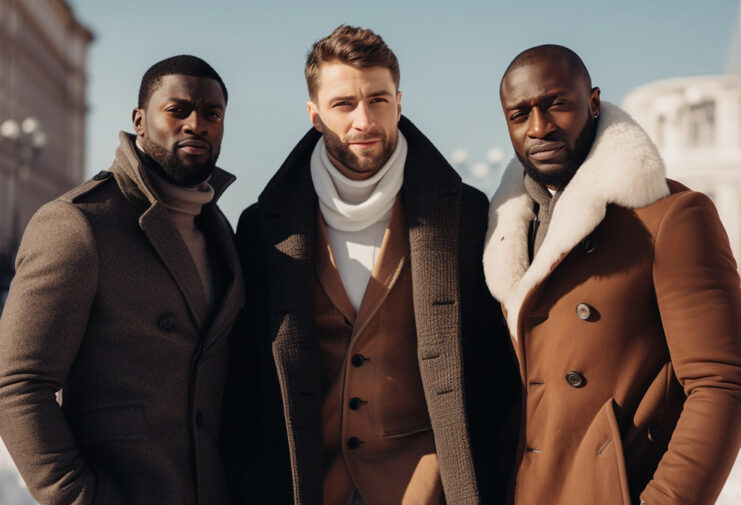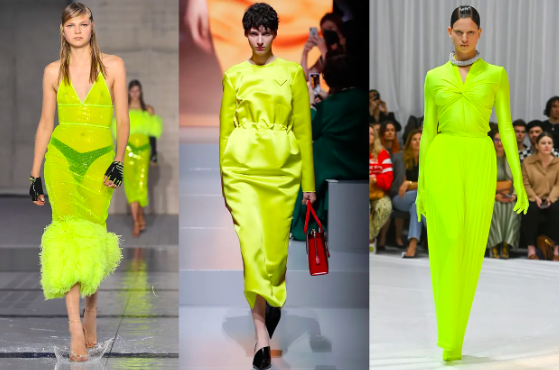Arguably the ultimate winter coat, a good parka will keep you warm in even the iciest of temperatures. This style has been favoured by the likes of Antarctic explorers, mountaineers and those who call the coldest places on earth home.
For the sake of argument, we’re going to assume that you fall into none of these categories, but it’s still nice to know your outerwear could stand up to the challenge if you were to get lost on the way to the office and somehow end up on the north face of K2.
Buying Considerations
Originally crafted from caribou or seal skin, today’s parkas will more likely combine a hard-wearing, water-repellent and windproof polyester outer shell with a softer nylon lining. A good parka should be filled with high-quality duck down (responsibly sourced) to provide warmth – aim for a fill power in the high hundreds.
A coyote fur (faux or responsibly sourced) hood will keep biting winds away from the face while maintaining vision, and won’t freeze in sub-zero temperatures. Similarly, drawstrings at the waist and cuffs are not only great for bringing shape to your silhouette but will keep the cold out and the warmth in.
Peacoat
Dressing to be both warm and smart is one of the biggest challenges winter presents. But with a traditional peacoat hanging up in your wardrobe you need never worry about it again. This cold-weather essential is yet another example of the military’s influence over menswear; the style was originally created for Navy officers out at sea.
However, in recent years the world has discovered it lends itself very nicely to pairing with tailoring, or selvedge denim and minimalist trainers. And therein lies the peacoat’s beauty: as well as being warm, it’s versatile and easy to dress up or down. Looking good in the cold has never been so simple.
Buying Considerations
classic peacoat will be cropped in length, feature broad lapels reaching almost across the shoulder, be double-breasted at the front, fastened by large buttons, and to the sides house vertical or diagonal-slash pockets. You may even find some iterations with epaulettes, but this is perhaps a step too far.
Chore Coat
The chore coat was built to shield manual workers from the elements, using materials and construction techniques capable of withstanding serious punishment. Today, you’re more likely to see one being sported by an East London barista than a weather-beaten railroad worker but its effectiveness as a winter coat remains the same.
This rugged style works best as part of a casual, workwear-inspired ensemble. But that’s not to say that smarter clothing is off-limits. Try using your chore coat as a substitute for your blazer, combined with a pair of wool trousers, black leather Chelsea boots and a textured shirt for a contemporary take on business casual.
Buying Considerations
A chore coat will often be crafted in a thick material, such as a 12oz, 100% cotton canvas. Being all about utility and function, demand four large front pockets – two at the breast and two toward the bottom of the jacket.
Likely boxy and oversized, to enable layering, a good chore coat will also be water repellent and feature a large collar to turn up when the biting winds snap at your neck. For winter, ensure yours is fleece-lined or similar to deliver extra warmth (you’ll find unlined versions for summer wear).
Overcoat
There are few things less enjoyable than enduring a soaking on the way to the office and having to spend the rest of the day in a sodden suit. Finding a suitable top layer that effectively pairs with tailoring can present a challenge but the overcoat provides a foolproof solution.
Wool is naturally insulating and water repellant, plus the extra length in the body keeps the wearer fully sheltered from the elements, trousers and all. Not to mention it looks very sleek too. If cost per wear is a concern, fear not, because this timeless classic looks just as good with jeans, a roll neck and trainers.
Buying Considerations
A traditional overcoat finishes below the knee and is double-breasted. However, single-breasted styles are now much more commonplace and equally acceptable, particularly for those who don’t need to add any extra bulk or width to their frame. Go for classic notch lapels, and avoid using the pockets (of which there should be one breast and two waist-height) where possible to maintain a streamlined silhouette. Finally, a three-button fastening brings the coat to a close – button up all three.


